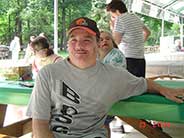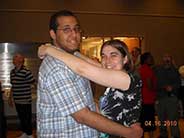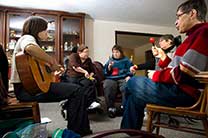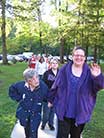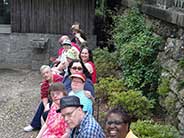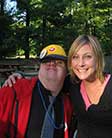When several people with disabilities live in one property, the need for careful health and safety planning increases.
Fire Safety
Make an evacuation plan. You must plan exit routes for tenants and staff. The evacuation plan should include a meeting place outside. The provider agency can help with fire safety plans or families can contact the local fire department.
Practice periodic fire drills. The evacuation plan should be reviewed regularly with residents and staff.
Install hard-wired smoke & carbon monoxide detectors. All homes for persons with disabilities should have a hard-wired smoke-detection system which also includes carbon monoxide detectors. The advantage of hard-wired versus battery-operated smoke detectors is that they don’t rely solely on batteries, and the alarm system can be tied into a security company for notifying the local fire department. Make sure smoke detectors are installed properly and checked periodically.
Install a fire extinguisher in the kitchen and vehicles.
Make sure bedroom windows are unobstructed. They also must be easily operated to serve as an effective secondary means of escape.
Remove any chain locks or double-keyed deadbolts on exit doors. These have prevented people from exiting a building. Exiting a building should be as easy as possible, especially in the confusion of a fire. Ensure doors are in good working order.
Use Lighting & Outlets Correctly. Light bulbs must be an appropriate wattage for their fixtures. Many light fixtures are designed for light bulbs of 60 watts. Installing 100-watt bulbs in these fixtures can lead to dangerous deterioration of the fixture or wiring. Electrocution can result from open light fixtures without bulbs, and overloaded or worn out outlets can cause a fire.
Clean dryer lint filters and vents. These are a source of fire.
Scalding
Families should evaluate the ability of the tenants themselves to control the hot water in the house, because the staff cannot always protect tenants from scalding.
For tenants who cannot recognize or control water temperature, anti-scald devices can be installed at the bathroom fixtures or centrally at the hot water tank.
Smokers
If someone in the house smokes, these features should be considered:
- A designated smoking area, preferably away from food preparation and not in a bedroom
- Ashtrays with cigarette holders in the center (so that if a cigarette falls it will fall into the ashtray)
- An air cleaner unit in the smoking area
- A policy about staff smoking on the property
Severe Weather
For severe weather, these items and procedures should be in place:
- A clear procedure for severe weather (tornado, flood, etc.)
- Periodic practice drills and a regular review of the plan with residents and staff
- A severe weather kit with first aid, flashlights, battery-operated radio, and other needed items
A Total Evacuation Plan
Sometimes, a total evacuation of a property is required due to weather, circumstance, or accident.
- Plan an alternate site for residents to stay temporarily.
- Also plan a backup site, in case the first choice is not an option.
- Review the evacuation plan with staff, and post instructions in an easily accessible place in the home.
Emergency Information
Emergency information needs to be updated any time there is a change. Consider assigning one person to check the sheets periodically. Pertinent information about each resident needs to be accessible, including information about:
- Allergies
- Medical diagnoses
- Current medications
- Height, weight
- Special diets
- Date of last tetanus vaccine
- Guardianship information and emergency contacts
- Insurance information
- Any other information that a healthcare provider may need
A card with emergency contact information for each staff member working in the home should also be posted. This can include emergency contacts and critical medical information (allergies and diagnoses such as diabetes).
All emergency information for staff and residents should be stored close to the phone where it is easily accessible in an emergency. Keep them in a folder along with emergency instructions and other important phone numbers.
Develop regular daily routines, especially for health and safety concerns, so that all housemates and support staff can refer to one consistent plan.



